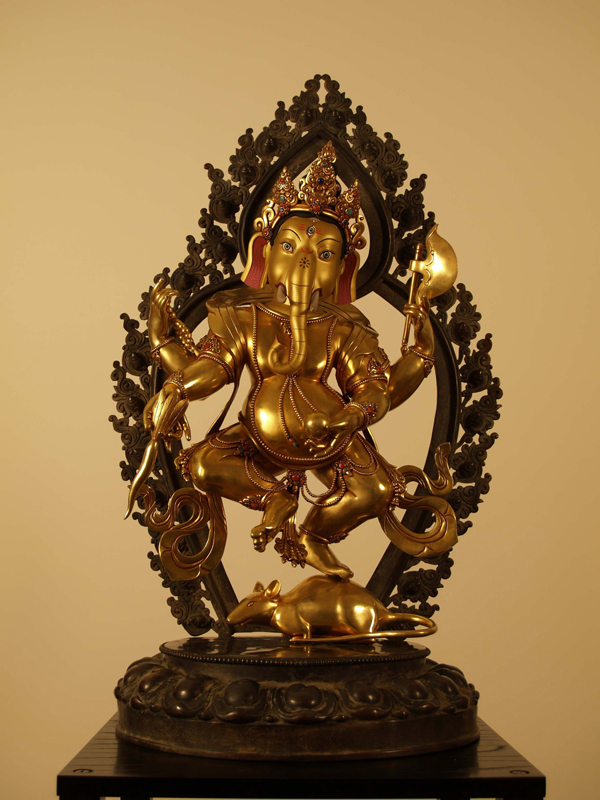Height 84cm
Ganesh, or Ganapati, is one of the most popular guardian deities worshipped in Nepal by both Hindus and Buddhists alike. Large numbers of independent temples of Ganesh are found throughout the Kathmandu Valley. Ganesh is the deity for the elimination of obstacles. To begin any work or enterprise, Nepalese people pray to this deity in hopes that they may accomplish their work successfully by averting or overcoming any obstacles in their path. Ganesh is therefore associated with good fortune, auspicious beginnings, and the overcoming of obstacles. He carries objects that help destroy ignorance and bring inconceivable benefits and happiness to many sentient beings, the Buddhaユs teaching, and ultimately enlightenment. His two other hands carry a rosary, symbolizing the strength of the continuity of prayer, and a parasu (axe) to clear away obstacles.
This elephant-headed god has to be first propitiated before worshipping other gods. He is one of the sons of Shiva and is known as メSiddhi Dataモ or メbestower of success in work.モ His elephant head has only one full tusk, while the other is broken. He supposedly lost it in a fight with Parasuram. It is also said that Ganesh broke his tusk to write the Mahabharata, which was dictated by the sage Vyasa. His elephant head is believed to be an emblem of wisdom and sagacity. His mount is the Mooshika or shrew. He is also known as Vinayaka.

